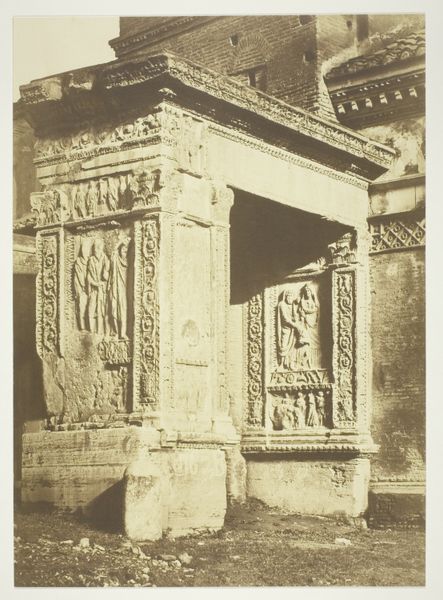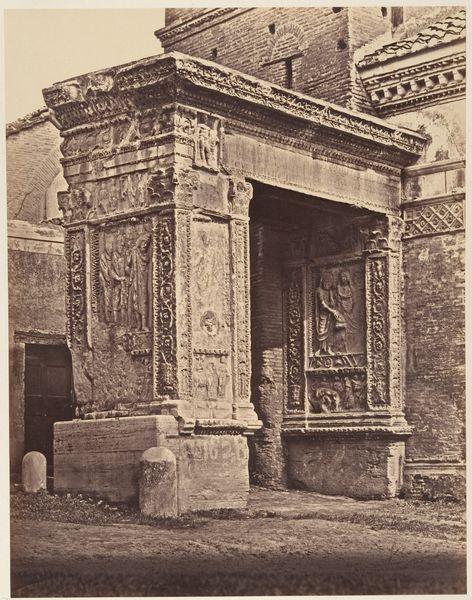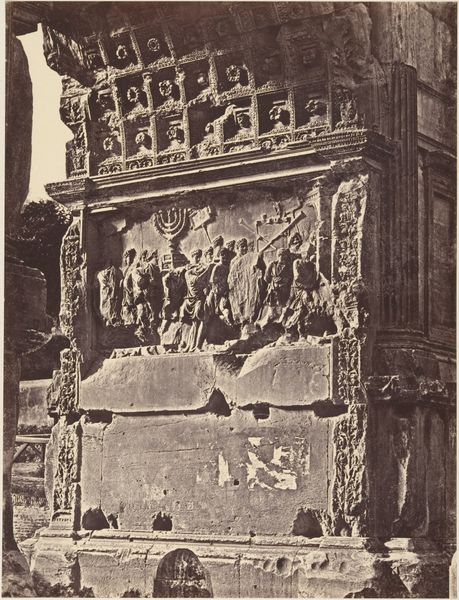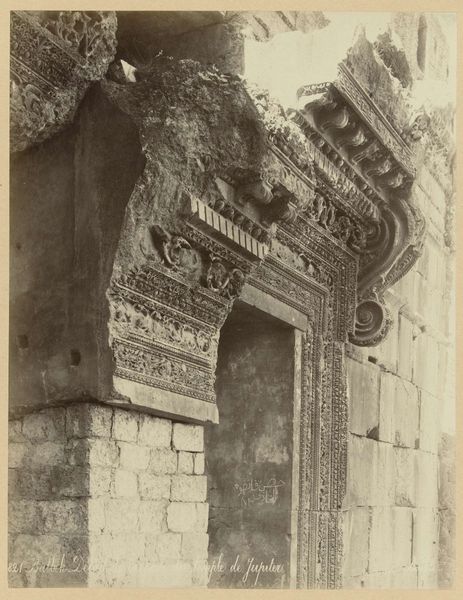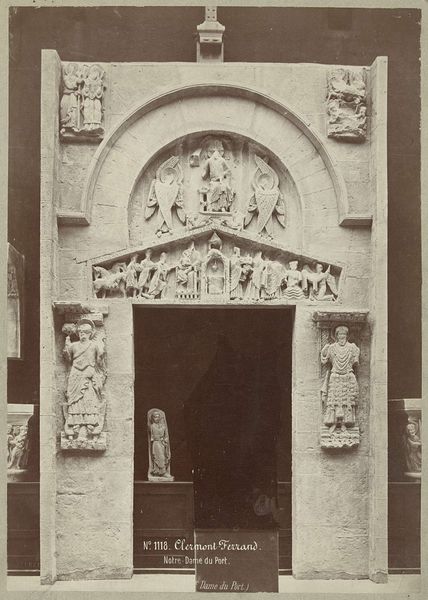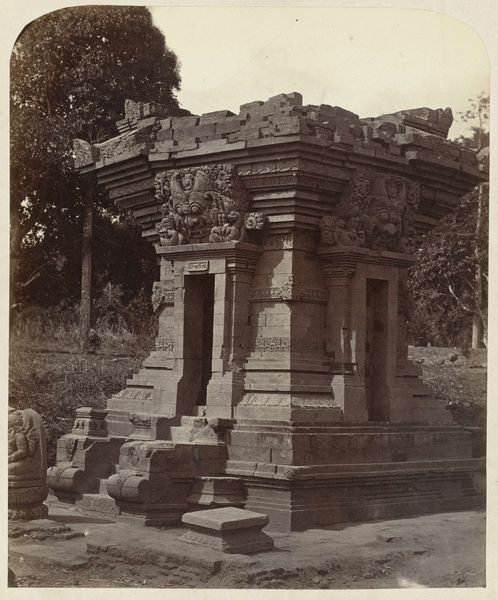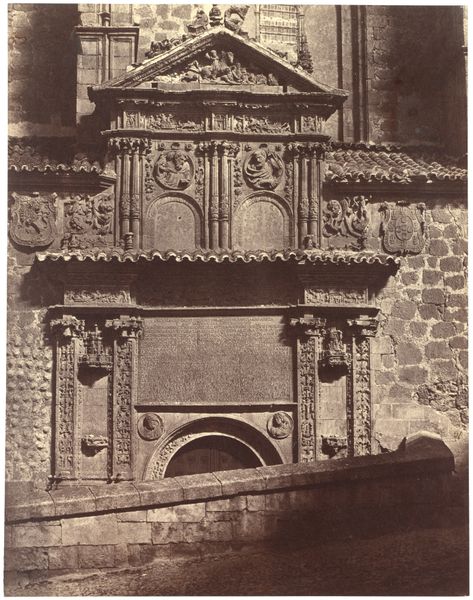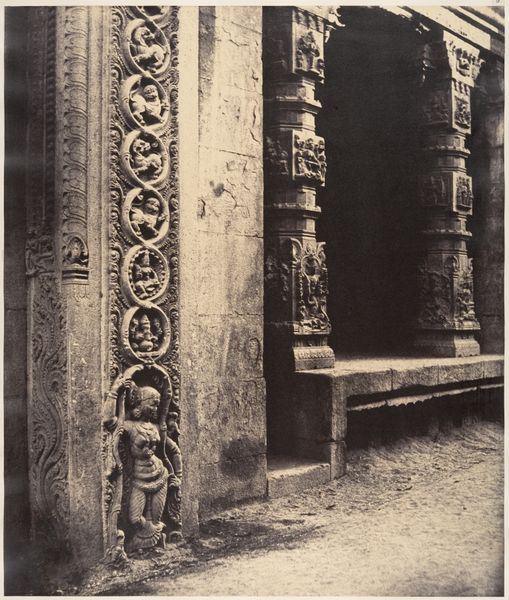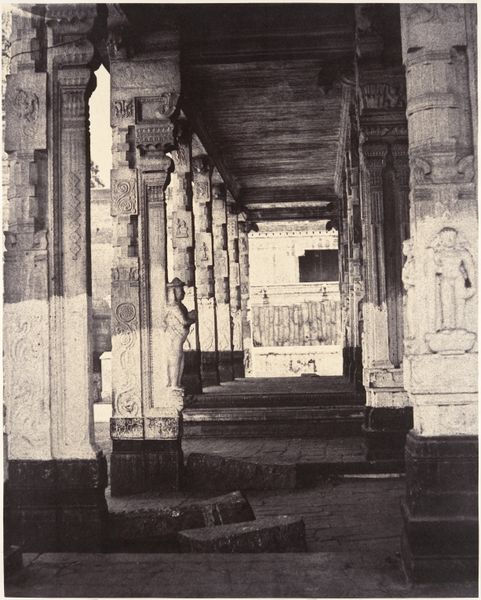
photography
#
landscape
#
classical-realism
#
photography
#
romanesque
#
geometric
#
ancient-mediterranean
#
cityscape
#
history-painting
Dimensions: height 368 mm, width 287 mm, height 639 mm, width 492 mm
Copyright: Rijks Museum: Open Domain
Curator: This photograph, taken by James Anderson between 1850 and 1877, captures the Arch of Septimus Severus on the Forum Boarium in Rome. Editor: It's incredibly striking – the sheer physicality of the stone, even rendered in a sepia-toned photograph, speaks volumes. It really drives home the immensity of the labor and resources needed for such a structure. Curator: Absolutely. The Arch, dedicated to Emperor Septimus Severus and his sons, carries an immense weight of Roman imperial ambition and propaganda. Notice how the carved figures echo familiar tropes of power and victory. Even in decay, it resonates. Editor: And what is decay if not material transformation? You can almost feel the weight of time eroding this structure. Look closely – the texture, the grime, the crude graffiti, it's all evidence of the lives this arch has touched, emperors and commoners alike. What photographic printing process did Anderson use? I wonder what toners were available to imbue this photo with such a muted effect. Curator: Anderson likely used an albumen print, popular at the time for its clarity. This decay, though, adds a poignant layer of meaning to the triumphal imagery. What stories do you see inscribed in the carvings themselves? Do these historical subjects carry symbolic value? Editor: Seeing the figure posed beside it, dwarfed by the scale, invites speculation about audience, viewership, and photography's intervention in how architectural projects were designed to present. Is that framing meant to convey humility? Curator: Perhaps to evoke the Sublime. But in Roman ideology, these triumphal arches were potent symbols—gateways of power, echoing conquest. The individual figure may suggest that relationship—mortality in the face of enduring empire. I would suggest to others the enduring continuity of visual languages throughout culture to contemporary design practices. Editor: From my viewpoint, Anderson's image, with its focus on materiality and age, also shows the Roman use of design, engineering, and architectural technology and innovations within an economy using material. Thank you, Anderson.
Comments
No comments
Be the first to comment and join the conversation on the ultimate creative platform.
